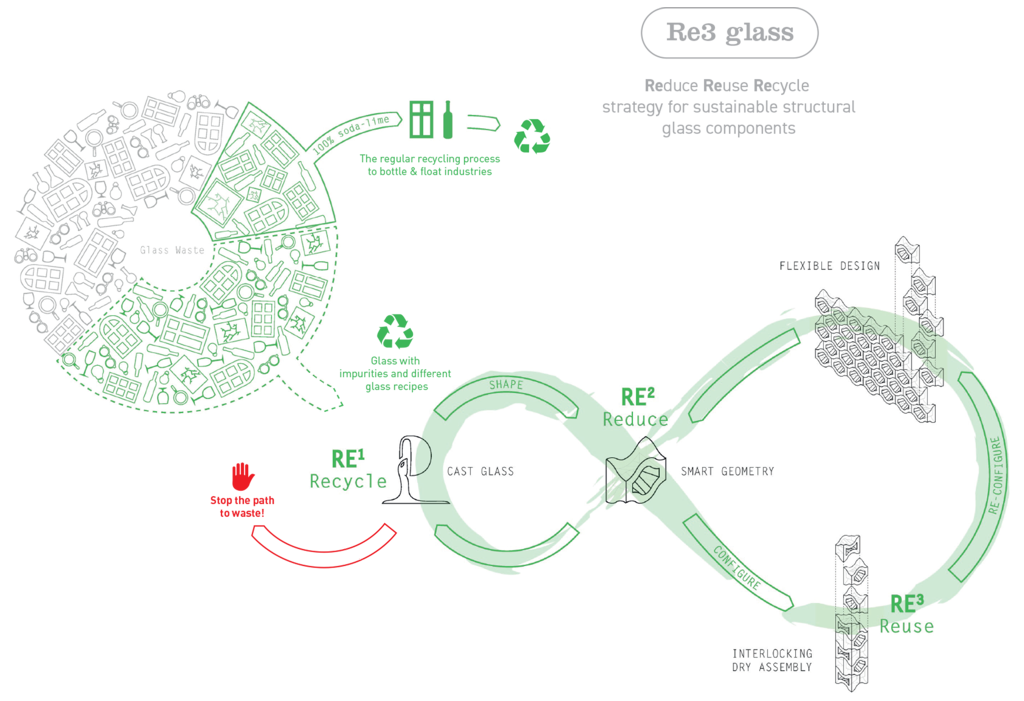The applicability of glass in structures is continuously ascending, as the transparency and high compressive strength of the material render it the optimum choice for realizing diaphanous structural components that allow for light transmittance and space continuity. Nevertheless, despite the fact that glass is fully recyclable, most of the glass currently employed in buildings is neither reused nor recycled due to its perplexed disassembly and its contamination from coatings and adhesives. The aim of this project is the development of a methodology and guideline for the sustainable application of structural glass in buildings. The use of cast glass is proposed instead of the commonly applied laminated float glass, to achieve solid mono material components of the desired cross section.
The goal of this project is the development of a strategy that employs cast glass in structures in respect to the “Re3” waste hierarchy of Reduce, Reuse and Recycle. In this context, the design of compressive elements comprising dry assembled, demountable components, out of usually non‐recycled glass, is suggested. As a proof of principle, full scale prototypes of characteristic interlocking column and wall sections will be produced and structurally tested.

Team:
Delft University of Technology
Dr.ir. Fred Veer and ir. Faidra Oikonomopoulou, Prof.ir. Rob Nijsse and ir. Telesilla Bristogianni
University of Twente
Dr. Elma Durmisevic and ir. Pieter Beurskens



